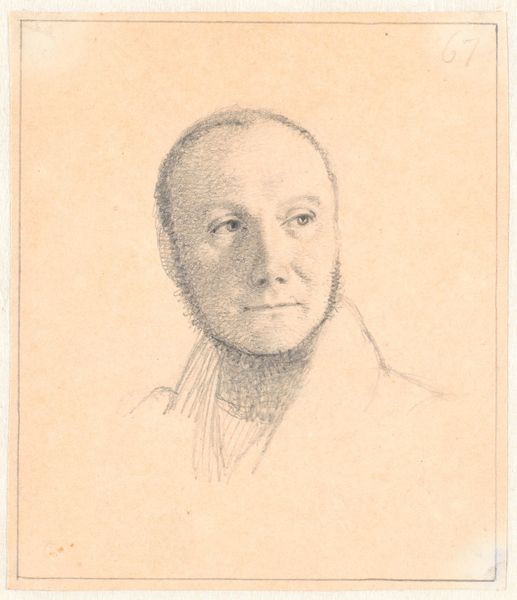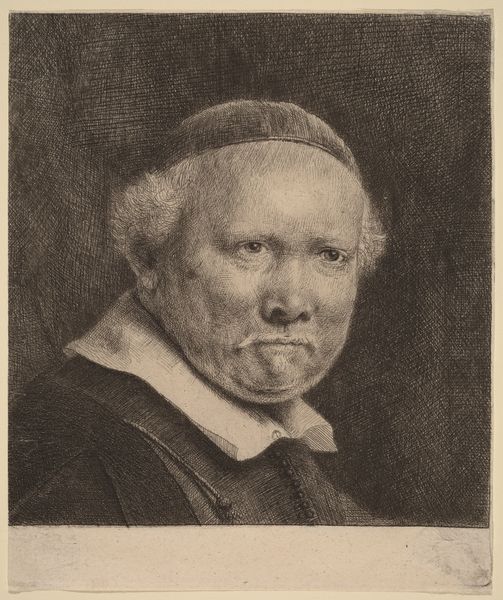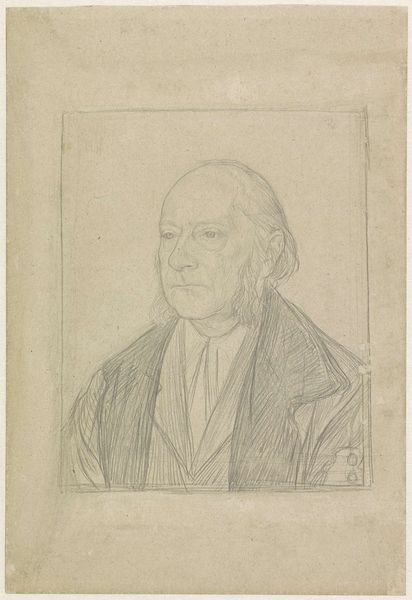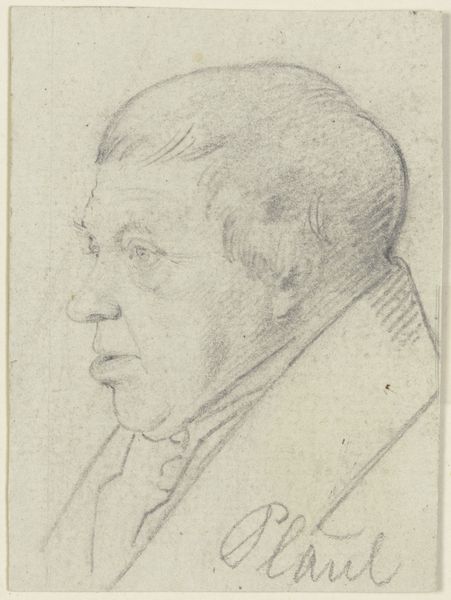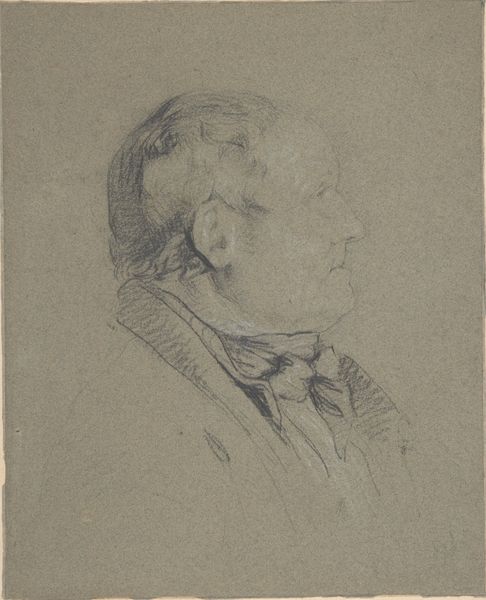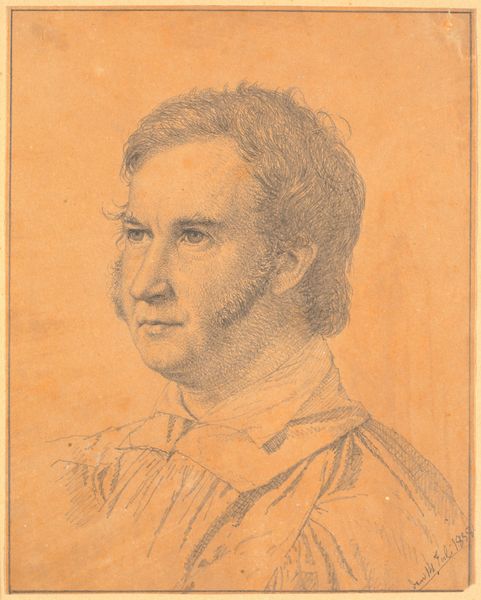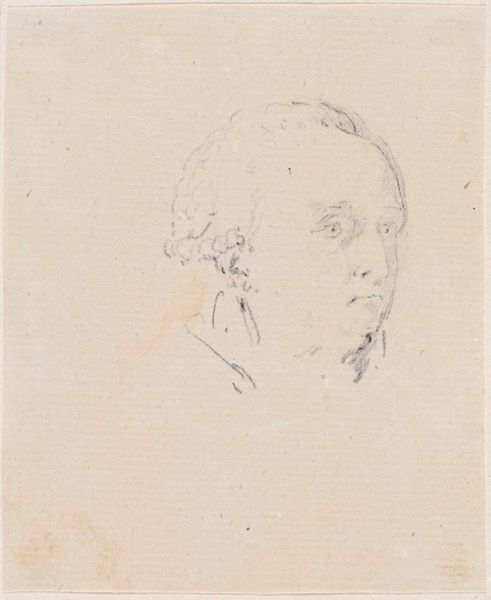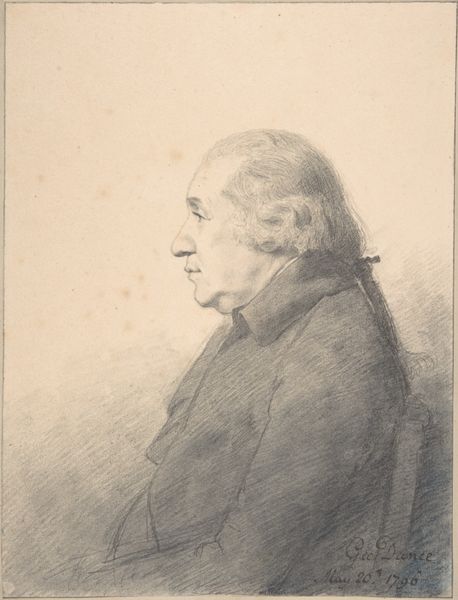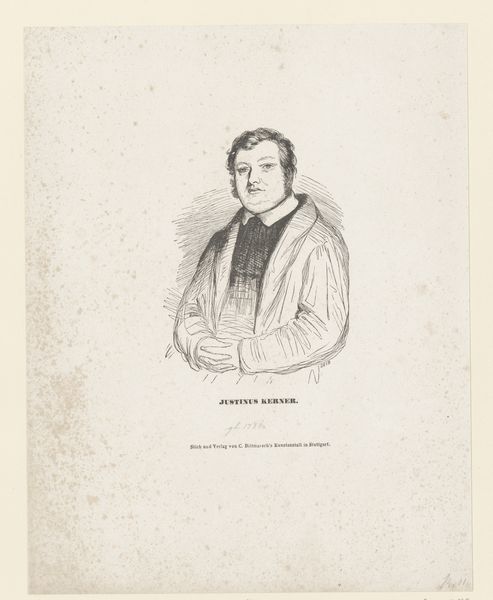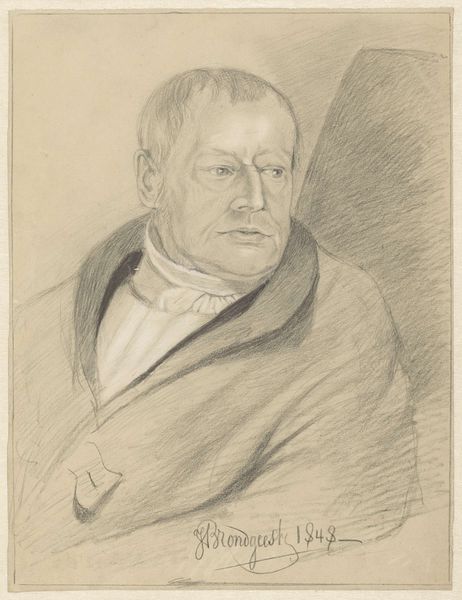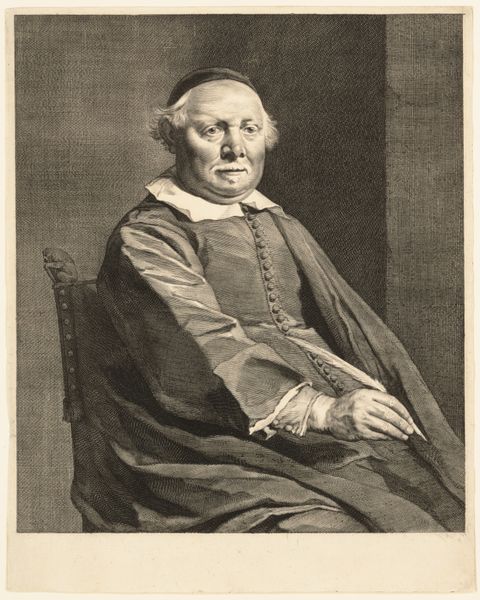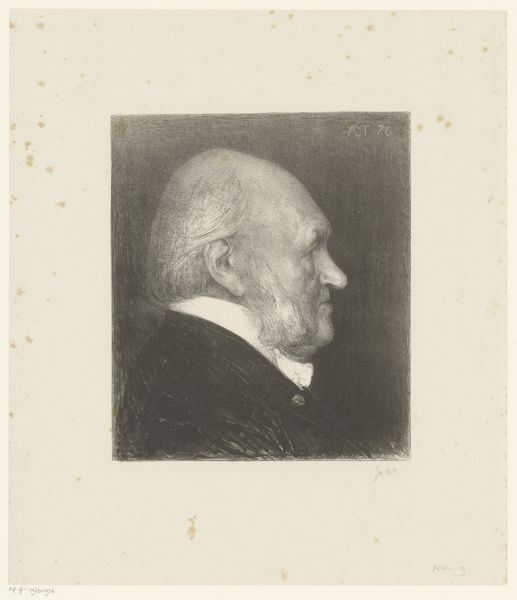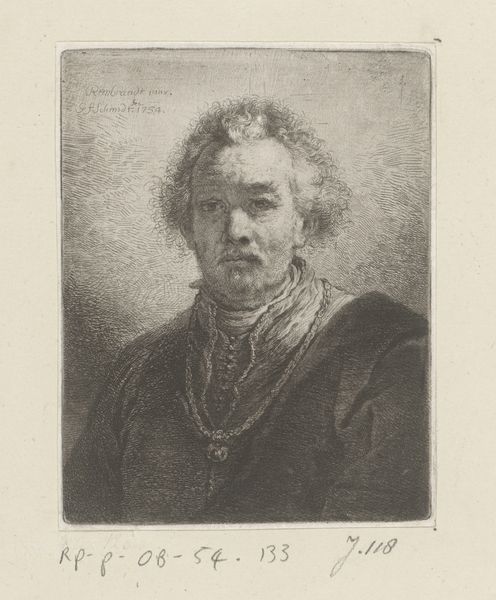
drawing, pencil
#
portrait
#
pencil drawn
#
drawing
#
charcoal drawing
#
figuration
#
pencil drawing
#
pencil
#
portrait drawing
#
academic-art
Dimensions: sheet: 27.4 x 22 cm (10 13/16 x 8 11/16 in.)
Copyright: National Gallery of Art: CC0 1.0
Curator: Looking at this pencil drawing, I immediately get a sense of… kind kindness? Like, whoever this cleric was, he seems like someone you could confide in over a cup of lukewarm tea. Editor: It's interesting you say that. What we're seeing is a portrait drawing, a "Half-Length Portrait of a Cleric", attributed to John Constable. Constable, of course, known more famously for his landscapes, seemingly diverted here to depict a member of the clergy. Curator: It’s the eyes, isn’t it? They seem to carry so much peace, and a tiny little bit of gentle amusement too. But honestly, it could be my own biases influencing my interpretation. I grew up around a lot of vicars with similar facial structures! Editor: Well, the context would’ve been very different then to how we read it today. Pencil portraits, especially of community figures like this, served a specific social function. These weren’t always about pure artistic expression, but often about projecting status, moral authority, or, quite literally, remembrance, placing an individual within a web of civic identities. Curator: So almost like an early form of, say, community engagement from the church? A visual "We're here for you" kind of thing? Editor: In a way, yes. Consider that this drawing would have been seen, most likely, by a very different audience to, say, his oil paintings. These were perhaps gifts, study pieces for other works, or even made for the sitter. What does that mean for how we read the “kindness” you see? Is it the subject, the artist’s skill, or a performance for the intended audience? Curator: A fair point. Still, the medium adds to that intimacy, doesn't it? Pencil on paper…it's not as imposing as oil on canvas, or a marble bust. It feels so approachable. He just…he wants to talk about the weather, perhaps over that lukewarm tea! Editor: Or to subtly reinforce social norms, maybe reminding parishioners about their place in the hierarchy! Seeing it as an historical document helps nuance your sensitive response. It is, either way, a compelling reminder of the roles of both portraiture and of religious institutions themselves. Curator: Still, it's nice to think he wasn't all fire and brimstone, right? It’s a lovely drawing to get to sit and ponder for a moment. Editor: Indeed. Art gives us a portal into the past, yes, but sometimes too a window into imagining alternate narratives and emotions around it.
Comments
No comments
Be the first to comment and join the conversation on the ultimate creative platform.
